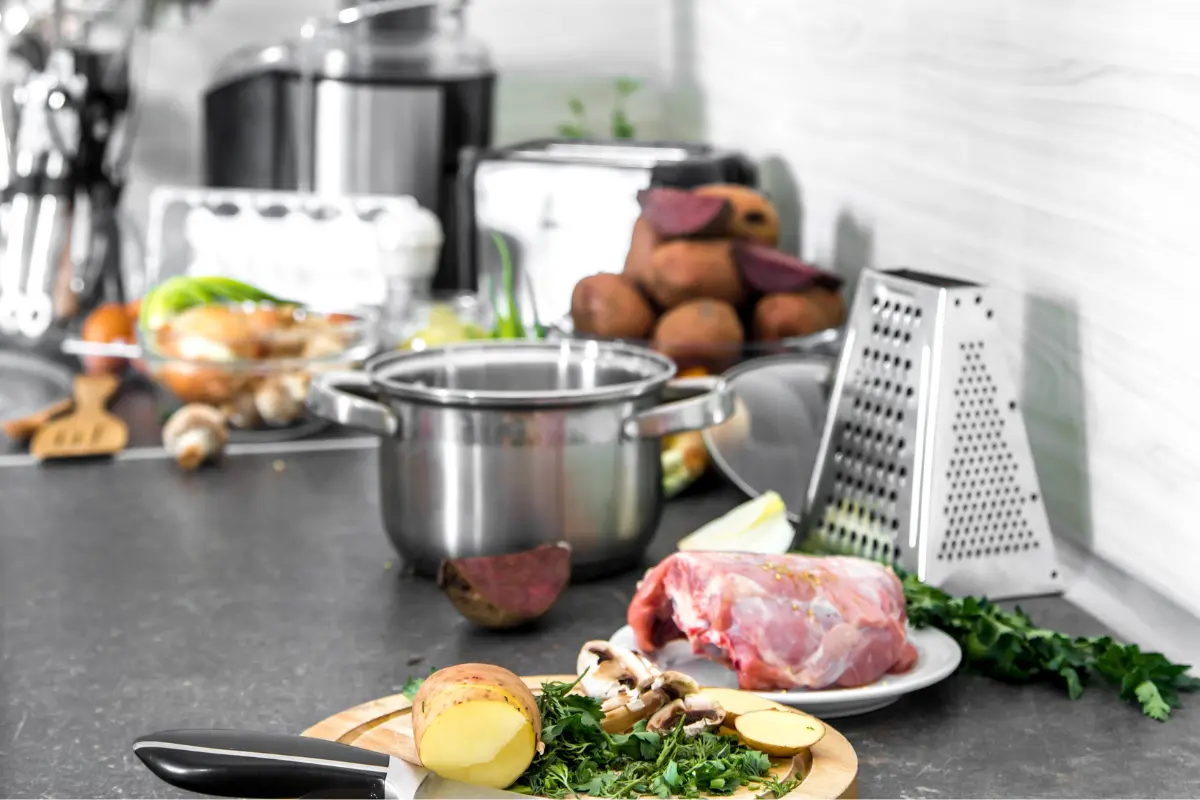Discover the art of perfectly cooking corned beef with the sous vide technique. This comprehensive guide, as wonderfully demonstrated in Went Here 8 This – Sous Vide Corned Beef, delves into the intricacies of this method, offering insights into optimal temperatures, preparation techniques, and solutions to common challenges. Whether you’re a culinary enthusiast or a home cook, this article will equip you with the knowledge to achieve tender, flavorful results every time. Embrace the precision of sous vide and transform your dishes into culinary masterpieces.
Understanding Sous Vide Cooking Method
Sous vide, a term literally meaning ‘under vacuum’ in French, has become a game-changer in the culinary world, as explained in What is Sous Vide Cooking, much like the traditional methods detailed in our Corned Beef Guide: History, Recipes, and Tips. This technique involves cooking food slowly in a precisely controlled water bath. It’s not just a fancy term used by professional chefs; it’s a method that can transform your home cooking, especially when it comes to preparing corned beef.
Why Choose Sous Vide for Corned Beef?
The sous vide method, as detailed in Amazing Food Made Easy’s Sous Vide Corned Beef Recipe, stands out for its ability to cook corned beef evenly and retain its moisture, resulting in a tender, flavorful dish. Unlike traditional cooking methods where the temperature is hard to control, sous vide allows you to cook the corned beef at a consistent temperature. This precision prevents overcooking and ensures that every bite is just as perfect as the last.
Moreover, as highlighted in Benefits of Sous Vide Cooking, sous vide cooking enhances the flavor of corned beef. By cooking the meat in its own juices, the flavors are intensified, creating a more robust and savory experience. This method also allows the spices and seasonings to deeply infuse the meat, elevating the overall taste.
In addition, sous vide is incredibly convenient. Once you’ve set the temperature and time, you can leave your corned beef to cook without constant monitoring. This hands-off approach, as shown in Sous Vide Ways , means you can focus on other aspects of your meal or simply relax, knowing that your corned beef is cooking to perfection.
In the next section, we’ll dive into finding the perfect temperature for sous vide corned beef, ensuring that your dish is cooked just right, as elaborated in our Sous Vide Corned Beef: Ultimate Guide to Perfect Texture & Flavor. Stay tuned as we explore the key to unlocking the full potential of your corned beef with sous vide cooking.
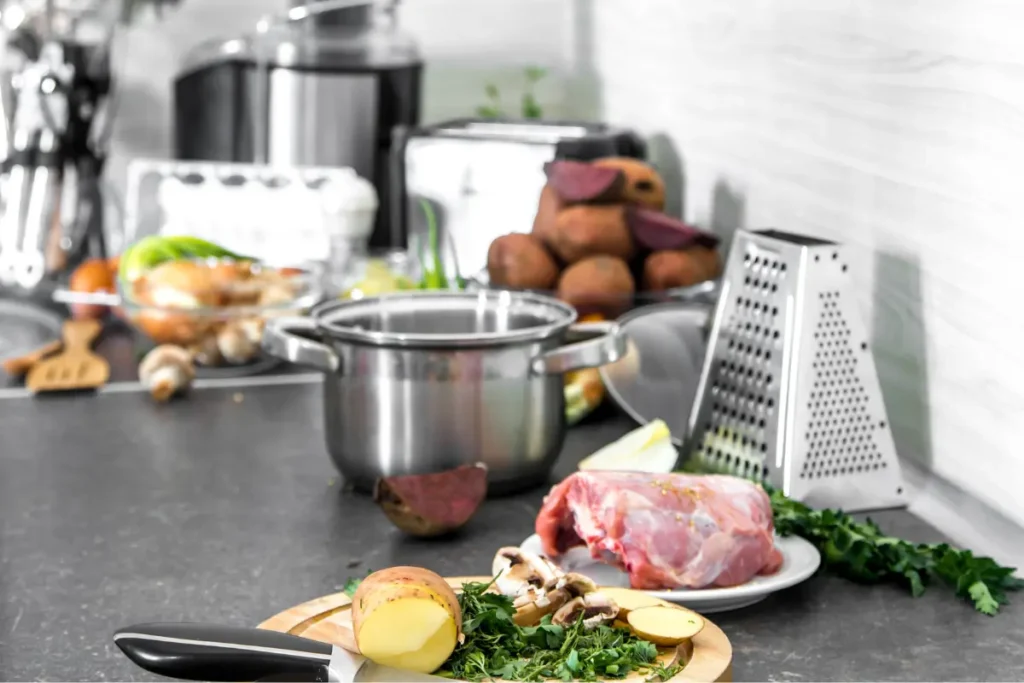
Finding the Perfect Temperature
When it comes to sous vide cooking, temperature is king. The right temperature can make or break your corned beef, transforming it from just another meal to a culinary masterpiece.
Temperature Variations and Their Effects
The beauty of sous vide lies in its precision. For corned beef, temperatures typically range from 145°F to 180°F, as explored in Two Kooks in the Kitchen’s Sous Vide Corned Beef Recipe Lower temperatures, around 145°F, result in a firmer texture, akin to what you’d expect from a traditional roast. As you inch towards 180°F, the corned beef becomes more tender and flaky, ideal for those who prefer a melt-in-your-mouth texture.
But it’s not just about tenderness. The temperature also affects how the fat renders and the connective tissues break down. At higher temperatures, these processes are accelerated, leading to a richer flavor and a more succulent mouthfeel. However, it’s crucial to strike a balance – too high, and you risk drying out the meat.
Expert Recommendations
Most culinary experts agree that the ideal temperature range for this dish lies around 165°F to 175°F. This range offers a perfect compromise between texture and flavor, ensuring the meat remains moist and tender, with enough bite to remind you of its robust nature.
It’s important to remember that sous vide is a forgiving method. Small deviations in temperature won’t ruin your dish. However, adhering to these guidelines ensures that your dish is nothing short of spectacular.
In the next part, we’ll explore the preparation techniques for this delicacy. From seasoning to submerging, every step plays a crucial role in the final outcome. Stay tuned as we delve into the art of preparing your dish for the perfect sous vide experience
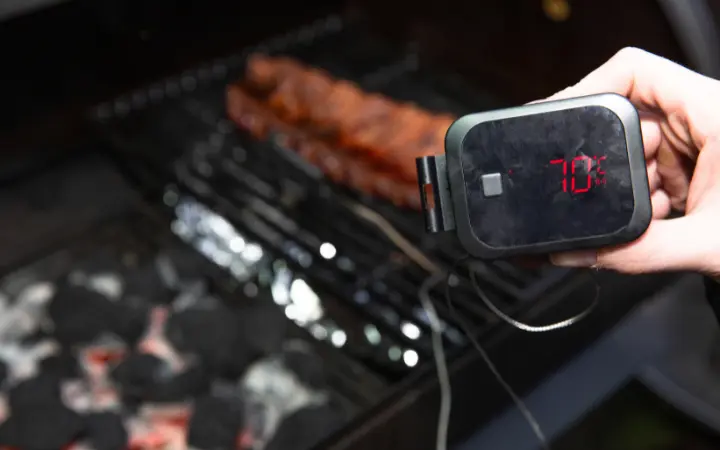
Preparing Corned Beef for Sous Vide
Proper preparation is crucial for achieving the best results with sous vide corned beef. It’s not just about setting the right temperature; how you prepare the meat plays a significant role in the final taste and texture.
To Submerge or Not to Submerge
One common question is whether the corned beef should be fully submerged in water during the sous vide process. The answer is a resounding yes. Full submersion ensures that the meat cooks evenly and allows the heat to penetrate every part of the corned beef, resulting in uniform texture and flavor. To achieve this, use a vacuum sealer to remove all air from the bag, or if you’re using the water displacement method, ensure the bag is properly sealed and fully submerged.
Seasoning and Spice Packet Usage
Seasoning is another critical aspect of preparing corned beef for sous vide, and you can find more about it in our Mastering Corned Beef Spices: A Complete Flavor Guide. Most store-bought corned beef comes with a spice packet, which is perfect for adding flavor. Before sealing your corned beef in the sous vide bag, rub the spice packet evenly over the meat. This not only enhances the flavor but also infuses the spices throughout the cooking process.
For those who prefer a custom flavor profile, feel free to experiment with your own blend of spices. Just remember, the sous vide method intensifies flavors, so a little goes a long way.
In the next section, we’ll discuss the cooking process and time for sous vide corned beef. Understanding how long to cook your corned beef and at what temperature is key to achieving that perfect tenderness and flavor. Stay tuned as we delve deeper into the sous vide cooking process.
Sous Vide Cooking Time for Corned Beef
Timing is as crucial as temperature in the sous vide cooking process. The duration of cooking not only affects the texture but also plays a role in how the flavors develop in the corned beef.
Time Variations for Different Textures
The cooking time for corned beef can vary significantly depending on the desired outcome. For a texture that’s tender yet still holds together nicely, a cooking time of around 10 hours is ideal. This duration is perfect for achieving a balance between tenderness and a sliceable consistency.
If you prefer your corned beef to be exceptionally tender, almost to the point of flaking apart, extending the cooking time to 20 hours or more can achieve this result. This longer duration allows the connective tissues in the meat to break down fully, resulting in a very soft texture.
Monitoring the Cooking Process
While sous vide is a relatively hands-off cooking method, it’s still important to monitor the process, especially for longer cook times. Ensure that the water level remains consistent and the temperature stays steady. This consistency is key to achieving the perfect sous vide corned beef.
In the next part, we’ll explore troubleshooting common issues with sous vide corned beef, such as dryness. Understanding these challenges and knowing how to address them will ensure that your corned beef turns out juicy and flavorful every time. Stay tuned for these essential tips and tricks.
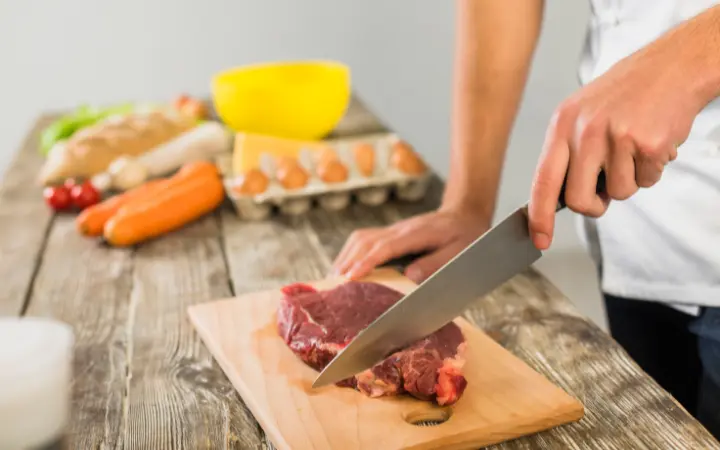
Troubleshooting Common Issues
Even with the precision of sous vide cooking, sometimes things don’t go as planned. Understanding how to troubleshoot common issues can make all the difference in achieving the perfect corned beef.
Why Does Corned Beef Come Out Dry?
One of the most common issues with sous vide corned beef is dryness. This problem often stems from cooking at too high a temperature or for too long. While sous vide is forgiving, extreme conditions can still lead to moisture loss. To prevent this, stick to the recommended temperature range (165°F to 175°F) and avoid overcooking.
Another factor contributing to dryness is the quality of the meat. Opt for well-marbled corned beef, as the fat content plays a crucial role in keeping the meat moist during the cooking process.
Adjustments for Better Results
If your corned beef does come out drier than expected, there are a few adjustments you can make. First, consider reducing the cooking temperature slightly and shortening the cooking time. This adjustment can help preserve the meat’s natural juices.
Additionally, adding a bit of liquid to the sous vide bag, like beef stock or even water, can help maintain moisture levels during cooking. This extra liquid can also enhance the flavor of the corned beef.
In the next section, we’ll compare different cooking methods for corned beef, including traditional and sous vide techniques. Understanding the pros and cons of each method will help you choose the best approach for your culinary needs. Stay tuned for this insightful comparison.
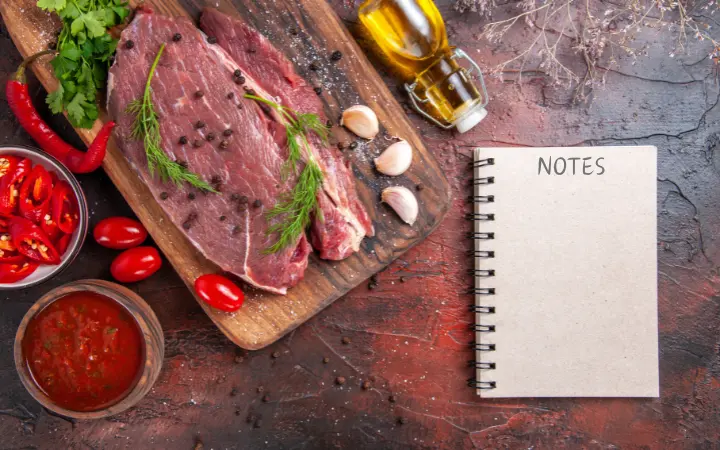
Comparing Cooking Methods for Corned Beef
Corned beef can be cooked using various methods, each bringing its own unique flavors and textures to the table. Understanding these differences is key to choosing the right cooking technique for your preferences and needs.
Sous Vide vs. Traditional Methods
Sous vide cooking offers unparalleled control over temperature and cooking time, leading to consistently tender and flavorful corned beef, much like the recipes you’ll find in our Ultimate Guide to Corned Beef Egg Roll Recipes, Tips & Nutrition. This method is ideal for those who value precision and are looking to achieve a specific texture. Additionally, sous vide cooking allows the corned beef to cook in its own juices, intensifying the flavors.
Traditional methods, such as boiling or roasting, have been used for generations. These methods can produce delicious results but often require more attention and skill to avoid overcooking. Boiling corned beef is a classic approach, especially for dishes like corned beef and cabbage, but it can sometimes result in a less flavorful and drier meat compared to sous vide.
Pros and Cons of Each Method
Sous vide’s main advantage is its ability to produce consistently excellent results with minimal effort. However, it does require special equipment and more cooking time, which might not be ideal for everyone.
Traditional cooking methods are more accessible since they don’t require specialized equipment. They can also imbue the meat with a more intense flavor, especially when roasting. However, these methods often lack the precise control of sous vide, making it easier to overcook the meat.
In the next part, we’ll dive into the FAQs section, answering common questions about sous vide corned beef. This section will provide additional insights and tips to help you perfect your corned beef cooking technique. Stay tuned for these helpful answers.
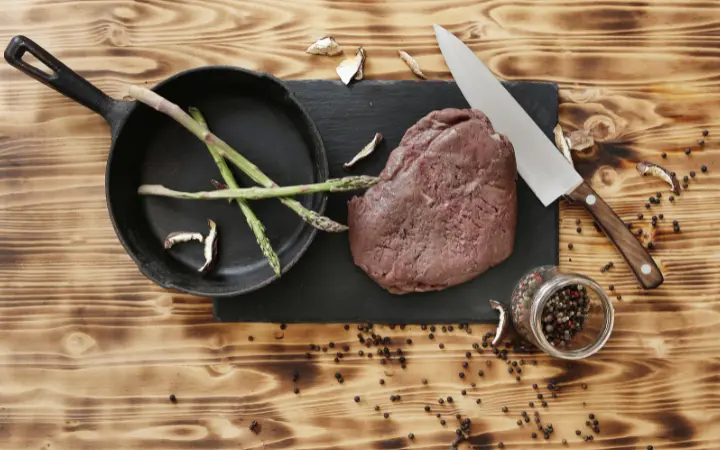
Frequently Asked Questions
In this section, we address some of the most common queries related to preparing corned beef using the sous vide method, providing you with additional insights and practical tips.
Popular Queries About Preparing This dish
How long can you keep it in the fridge?
- Once cooked, it can be stored in the refrigerator for up to 3-4 days. Ensure it’s properly sealed in an airtight container or vacuum-sealed bag.
Can you overcook corned beef in a sous vide?
- While this method is more forgiving, overcooking is still possible, especially if left in the water bath for too long. This can lead to a texture that’s too soft and a loss of flavor.
Is it necessary to sear it after sous vide cooking?
- Searing is not necessary but recommended for adding a flavorful crust. A quick sear in a hot pan or under a broiler can enhance the texture and taste.
Can I add vegetables to the bag with the corned beef?
- It’s best to cook vegetables separately, as they require different cooking times and temperatures. Cooking them together might result in overcooked or undercooked components.
How do you know when it is done?
- It is done based on time and temperature, not appearance. Follow the recommended cooking times and temperatures for the desired texture.
This FAQs section aims to clear up any uncertainties you might have about preparing corned beef using the sous vide method, making your cooking experience smoother and more enjoyable. With these tips and answers, you’re well on your way to mastering the art of perfect sous vide corned beef.
Conclusion
As we wrap up our comprehensive guide, it’s clear that the sous vide method offers a unique and rewarding way to prepare this classic dish. By controlling the temperature and cooking time precisely, sous vide allows for consistent, flavorful, and tender results that are hard to achieve with traditional methods.
Whether you’re a seasoned chef or a home cook looking to experiment with new techniques, sous vide cooking can elevate your dishes to new culinary heights. Remember, the key to success lies in careful preparation, temperature control, and patience. With these elements in place, you’re well on your way to creating a dish that’s not only delicious but also a true testament to your cooking skills

